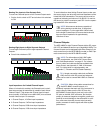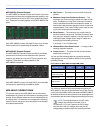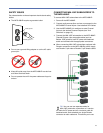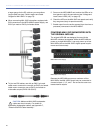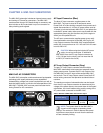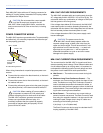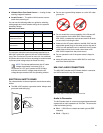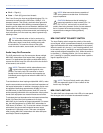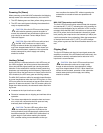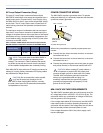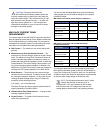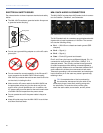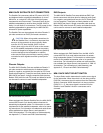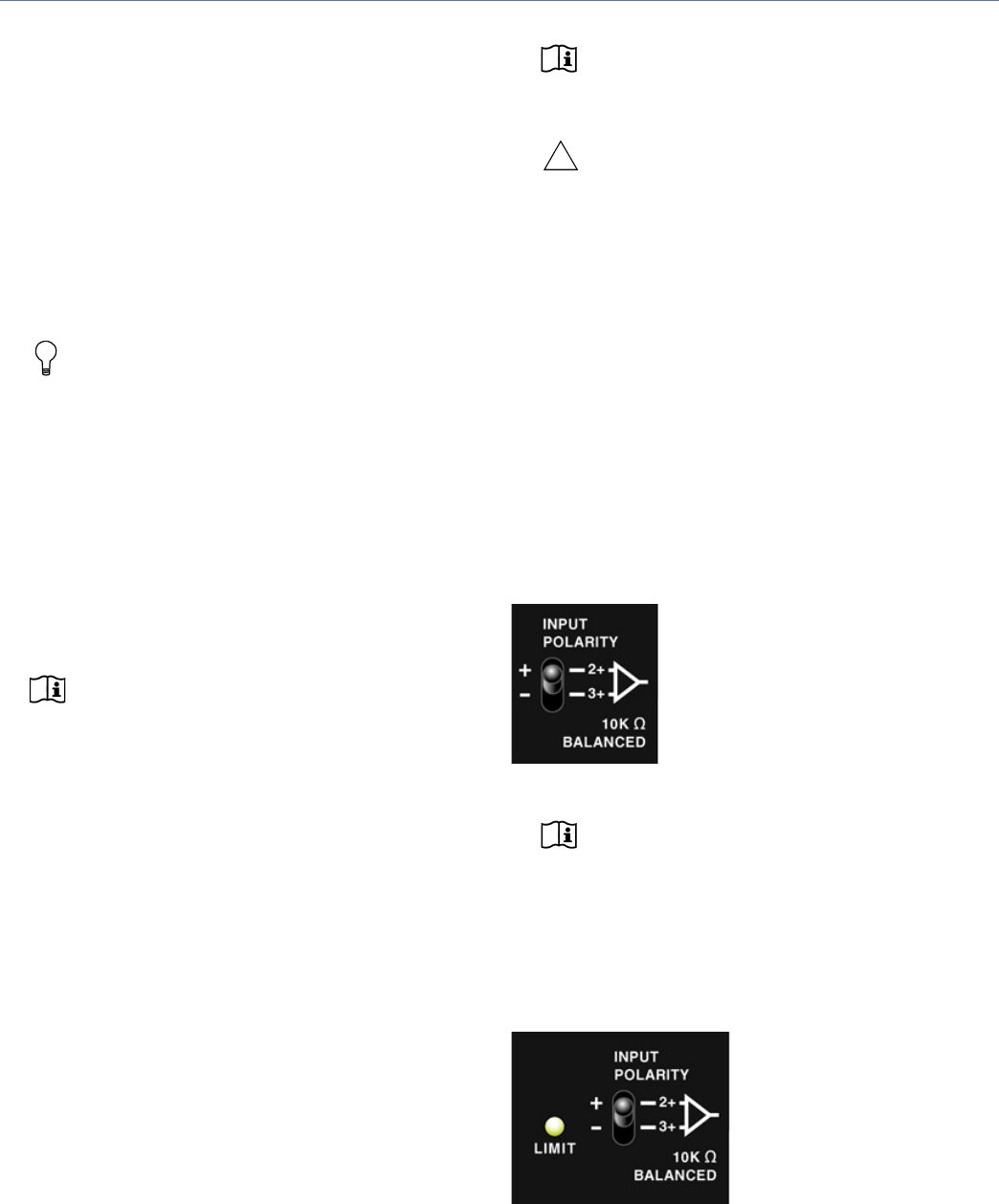
CHAPTER 4: MM-10AC SUBWOOFER
24
■ Pin 3 — Signal (–)
■ Case — Earth (AC) ground and chassis
Pins 2 and 3 carry the input as a differential signal. Pin 1 is
connected to earth through a 220 kOhm, 1000 pF, 15 V
clamped network. This circuitry provides virtual ground lift
for audio frequencies while allowing unwanted signals to
bleed to ground. Make sure to use standard, balanced XLR
audio cables with all three pins connected on both ends.
Telescopic grounding is not recommended, and shorting an
input connector pin to the case may cause a ground loop,
resulting in hum.
TIP: If unwanted noise or hiss is produced by
the subwoofer, disconnect its input cable. If the
noise stops, there is most likely nothing wrong with
the subwoofer. To locate the source of the noise,
check the audio cable, source audio, and AC power.
Audio Loop Out Connector
The XLR male Audio Loop Out connector allows multiple
MM-10AC subwoofers to be looped from a single audio
source. For applications that require multiple MM-10ACs,
connect the Audio Loop Out of the first unit to the Audio In
of the second, and so forth.
NOTE: The order in which subwoofers are con-
nected when looping audio signals is unim-
portant. The Audio Loop Out connector is wired in
parallel to the Audio In connector and transmits the
unbuffered source signal even when the MM-10AC is
powered off.
To avoid distortion when looping multiple MM-10ACs, make
sure the source device can drive the total load impedance of
the looped subwoofers. In addition, the source device must
be capable of delivering approximately 20 dBV (10 V rms
into 600 ohms) to yield the maximum peak SPL over the
entire operating bandwidth of the subwoofers. Most profes-
sional audio equipment can transmit these source levels.
To calculate the load impedance for the looped subwoofers,
divide 10 kOhms (the input impedance for a single
MM-10AC) by the number of looped subwoofers. For exam-
ple, the load impedance for 10 MM-10AC subwoofers is
1000 ohms (10 kOhms / 10). To drive this number of looped
subwoofers, the source device should have an output
impedance of 100 ohms or less. This same rule applies
when looping MM-10AC subwoofers with other self-pow-
ered Meyer Sound loudspeakers.
NOTE: Most source devices are capable of
driving loads no smaller than 10 times their
output impedance.
CAUTION: Make sure that all cabling for
looped subwoofers is wired correctly (Pin 1 to
Pin 1, Pin 2 to Pin 2, and so forth) to prevent the
polarity from being reversed. If one or more subwoof-
ers in a system have reversed polarity, frequency
response and coverage will be significantly
degraded.
MM-10AC INPUT POLARITY SWITCH
The Input Polarity switch swaps the polarity of the audio
source signal, which is sometimes necessary to acoustically
align the subwoofer with other loudspeakers in the system.
When the switch is in the up (+), non-inverting position, pin 2
is hot relative to pin 3, resulting in a positive pressure wave
when a positive signal is applied to pin 2. When the switch is
in the down (–), inverting position, pin 3 is hot relative to
pin 2, resulting in a positive pressure wave when a positive
signal is applied to pin 3.
NOTE: The Input Polarity switch only affects
the subwoofer signal. It has no effect on the
Audio Loop Out signal.
MM-10AC LIMIT LED
The MM-10AC has a three-color Limit LED on its rear panel
that changes color to indicate the subwoofer’s status.
MM-10AC Input Polarity Switch
MM-10AC Limit LED
!




